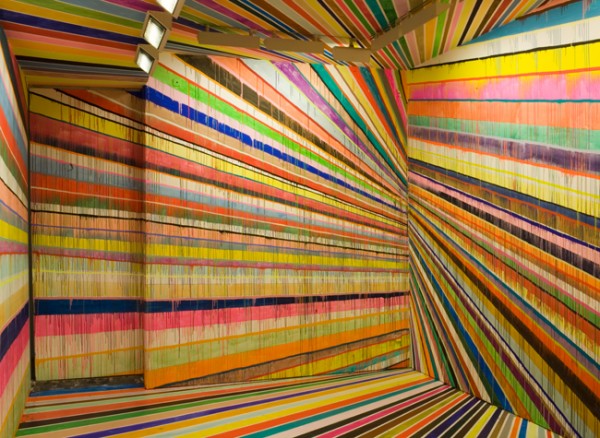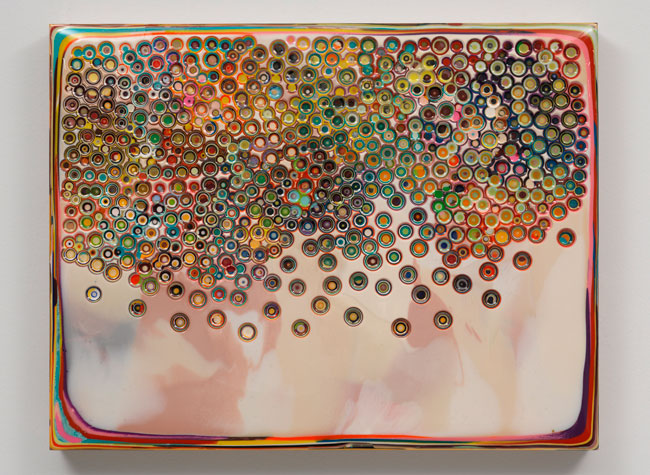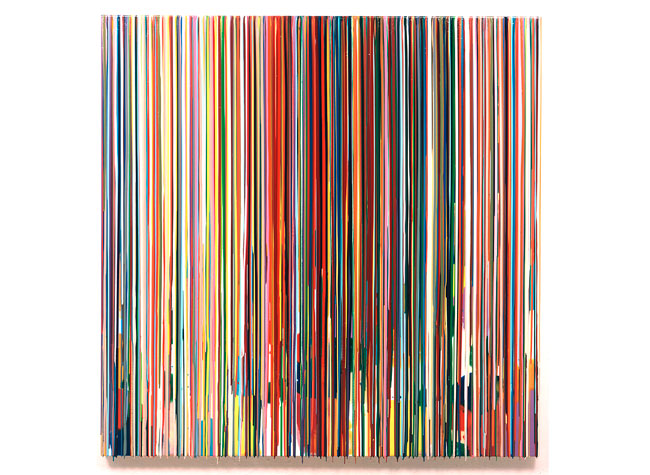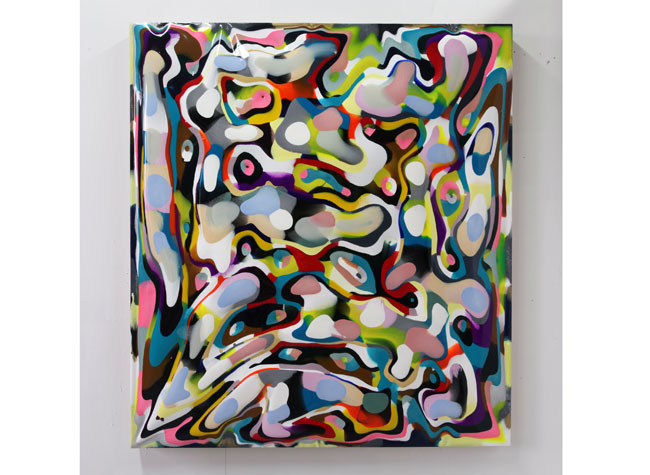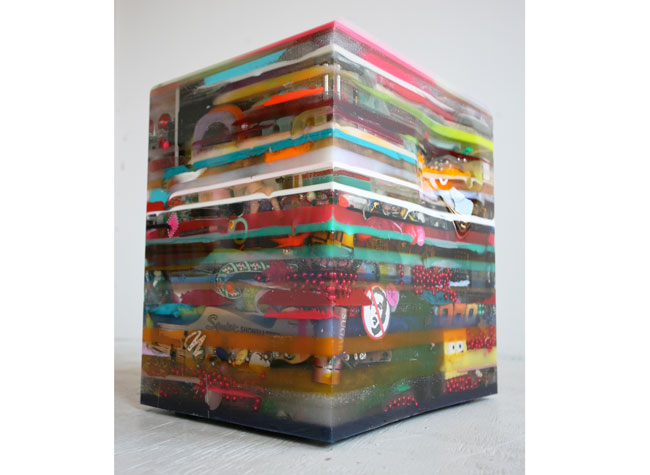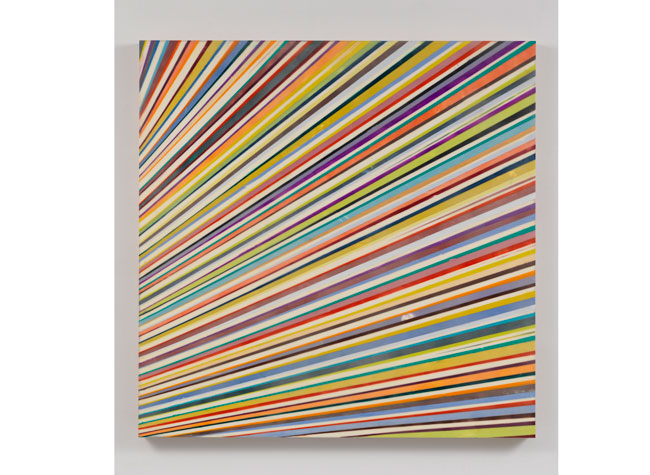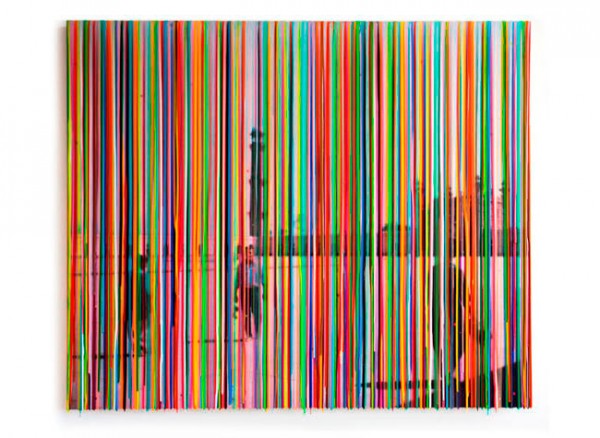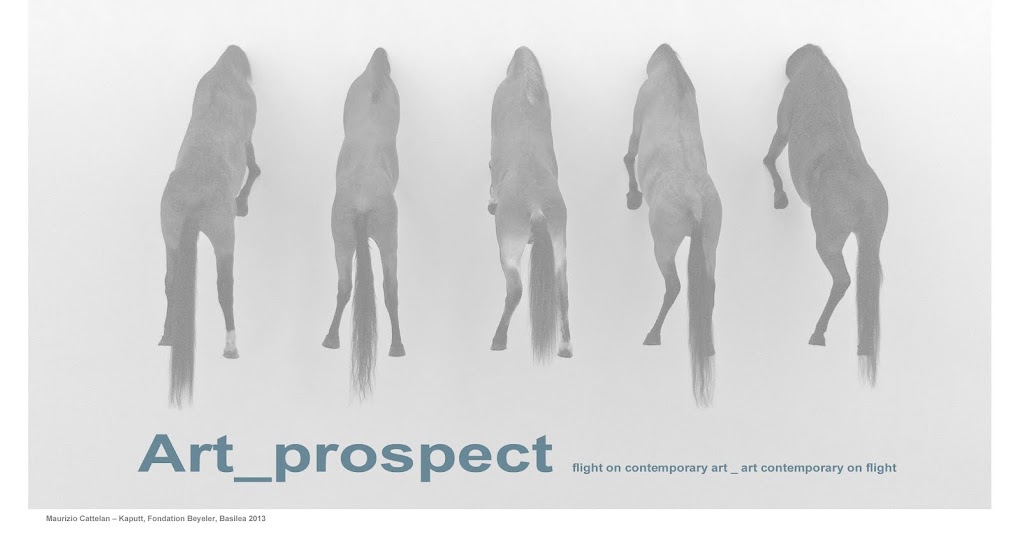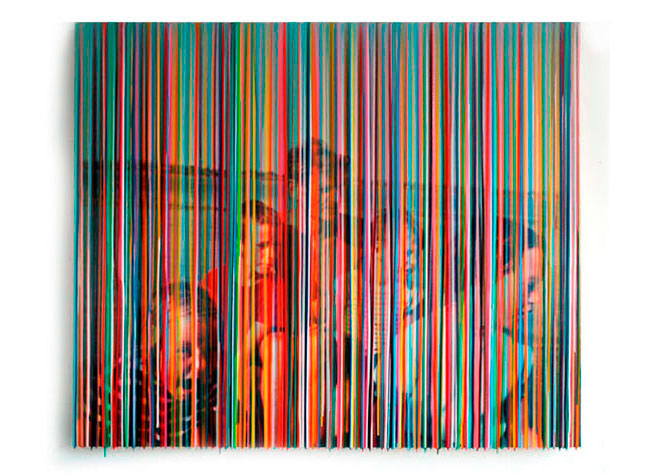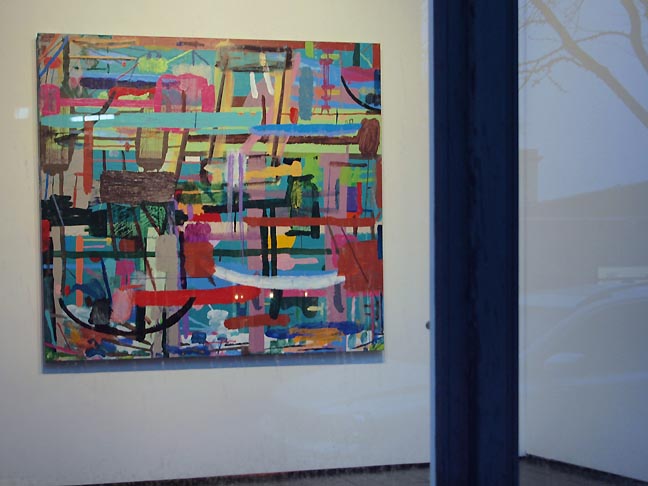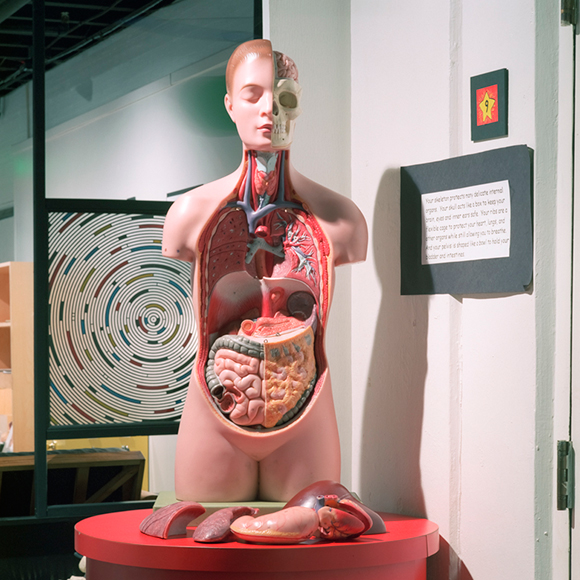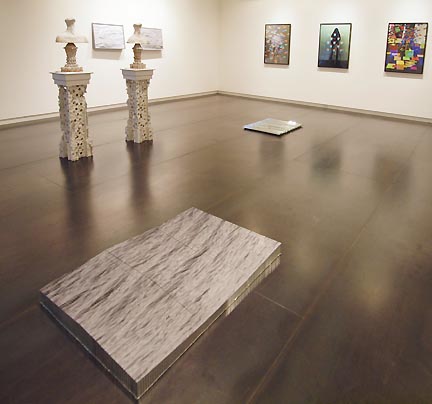
Boetti’s Me Sunbathing in Turin, 19 January 1969
This month sees the opening of a brand new exhibition at the Tate Modern looking at the career of Alighiero e Boetti, one of the most important and influential Italian artists of the twentieth century. The Italian artist’s prolific, varied career is also the subject of a new book by the exhibition’s curator Mark Godfrey. Today we take a look at the life and works of this enigmatic figure.
Alighiero e Boetti (1940-1994) is one of the most significant figures of postwar European art, and one whose practices are still having a huge impact on younger artists. His powerful influence can be attributed to the material diversity of his work, its conceptual ingenuity and his political sensibility (as typified by his involvement in the Arte Povera movement). Boetti also took a keen interest in the relationship between chance and order, in various systems of classification (grids, maps, etc.), and non-Western traditions and cultural practices.
Boetti’s extremely varied artistic output is the subject of a new exhibition at the Tate Modern,
Alighiero e Boetti: Game Plan (28 February – 27 May 2012). Highlights include works never seen in the UK such as the iconic Self-Portrait 1993, a life-size bronze cast of the artist hosing his head with a jet of water.

Boetti, Self-Portrait (1993)
Boetti’s Life and Work
Alighiero Boetti was born in Turin. As a young man he had profound and wide-ranging theoretical interests and studied works on such diverse topics as philosophy, alchemy, esoterics, mathematics and music. At seventeen, Boetti discovered the works of the German painter Wols and the cut canvases of Argentine-Italian artist Lucio Fontana, which were to have a profound influence on his later projects.
Working in his hometown of Turin in the early 1960s, Boetti began to create works out of unusual materials such as plaster, masonite, plexiglass, light fixtures and other industrial materials. He worked amidst a close community of artists that included Luciano Fabro, Mario Merz, Giulio Paolini, and Michelangelo Pistoletto, eventually establishing himself as one of the leading artists of the
Arte Povera (poor art) movement.

Lampada annuale (Yearly Lamp), 1966
Boetti continued to work with a wide array of materials, tools and techniques, including Biro ball-point pens and postage stamps. Boetti’s artistic strategies are considered typical for Arte Povera, namely the use the most modest of materials and techniques, with the aim of taking art off its pedestal.
A famous example of his Arte Povera work is Lampada annuale (Yearly Lamp, 1966), a single, outsized light bulb in a mirror-lined wooden box, which randomly switches itself on for eleven seconds each year. This work, which is on display at the Tate modern, focuses both on the transformative powers of energy, and on the possibilities and limitations of chance – the likelihood of a viewer being present at the moment of illumination is remote.
Boetti disassociated himself from the Arte Povera movement in 1972 and moved to Rome. Despite this disassociation, he did not fully abandon some of the movement’s democratic and anti-elitist strategies. In 1973, he renamed himself as a dual persona Alighiero e Boetti (“Alighiero and Boetti”) reflecting the opposing factors presented in his work (individual and society, error and perfection, order and disorder).
His work engaged with the changing geopolitical situation of his time, much of it made on his travels to places such as Ethiopia and Guatemala and Afghanistan. Between 1971 and 1979 he set up a hotel in Kabul as an art project and created large colourful embroideries, the most famous of these were the Mappa, world maps in which each country features the design of its national flag.
Embroidered by artisans, the maps were the result of a collaborative process leaving the design to the geopolitical realities of the time, and the choice of colours to the Afghan women responsible for the embroidery. The maps delineate the political boundaries of the countries; (some nations, such as Israel, are not represented because the Taliban regime of Afghanistan did not then recognize their existence). In one map, the sea is unexpectedly coloured pink rather than blue, as landlocked Afghans had no tradition of mapping, certainly not of oceans. The embroidery of each map normally took one to two years and, in some cases, much longer due to external events.

Boetti, Mapp (1983)
The Soviet invasion of 1979 made Boetti’s operations in Afghanistan impossible, but he continued to work on his maps, shifting from Kabul to Peshawar in Pakistan, where the group of Afghan artisans had taken refuge.
His most ambitious project was a large embroidered piece titled Classificazione dei mille fiumi piu lunghi del mondo (Classification of the thousand longest rivers in the world, 1977). In characteristically blocky letters, this work spells the names of the world’s 1,000 longest rivers in descending order of length. It is based on a list that required more than seven years of research by Boetti and his first wife, Anne Marie Sauzeau, an art critic, and that is known to many scientists as the ‘Boetti List’.
In his Aerei (1977), or Airplanes series, Alighiero e Boetti left as negative space line drawings of modern and historical airplanes. Originally culled from popular magazine sources, these often mural-size images construct an illusionary space of action and movement (similar works based on Aerei were then commissioned for an in-flight magazine). Indeed, Boetti pursued an interest in the media, which eventually brought him to collaborate with the daily Italian newspaper Il Manifesto, for which he produced a drawing every day for a year. He continued his interest in the media in 1983, when he created a series of pencil drawings traced from the covers of popular magazines.
He died of a brain tumour in Rome in 1994 at the age of 53.

Aerei, 1989
Alighiero E Boetti by Mark Godfrey

Alighiero E Boetti by Mark Godfrey
Alighiero e Boetti by Mark Godfrey (the curator of the exhibition at Tate Modern) is the first book covering the whole career of this crucial artist to be published in English. Rather than present a linear account of the artist’s creative practice, the book contains linked chapters that expound the key subjects of Boetti’s art, and position this work in relation to that of his European and American contemporaries.
…
THANKS TO http://yalebooksblog.co.uk
